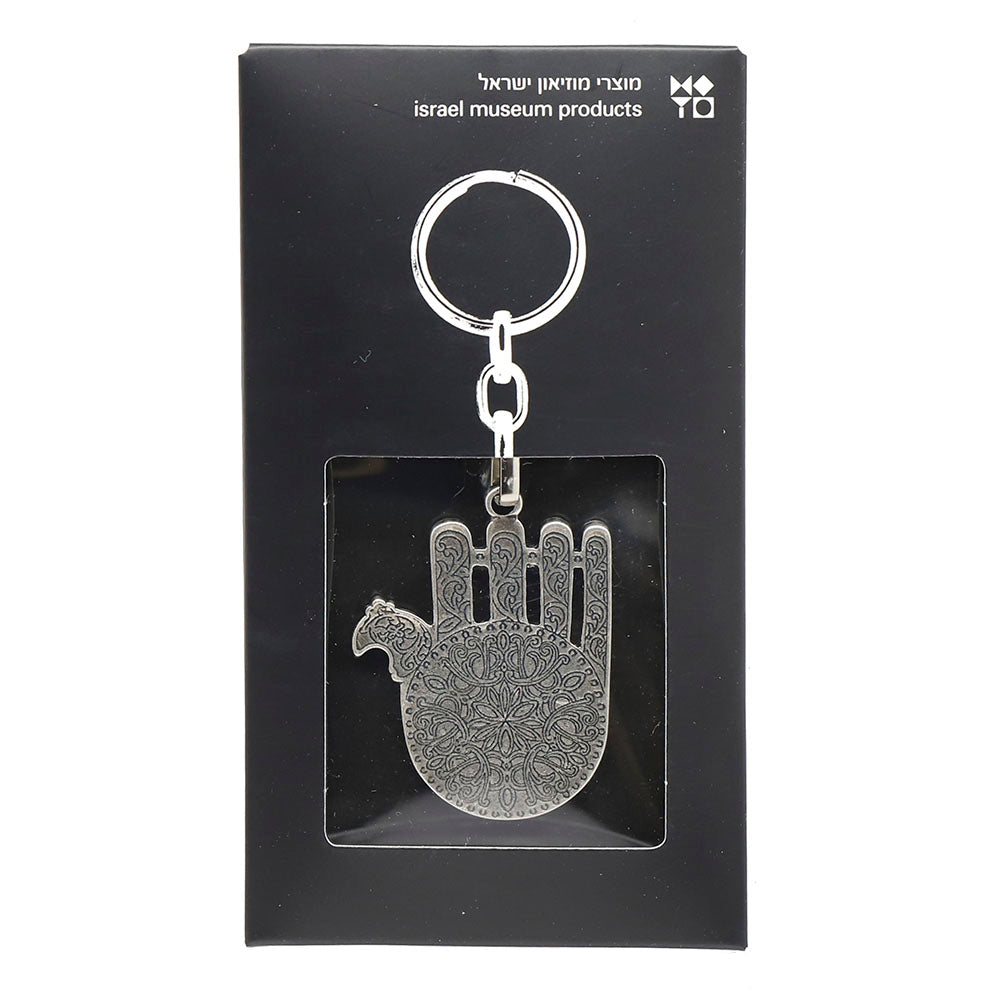
Moroccan Hamsa Keychain
Hamsa based on a synagogue lamp pendant The original object was made in Tetuan, Morocco, in the early 20th century (?), and belongs to the Feuchtwanger Collection, purchased and donated to the Israel Museum by Baruch and Ruth Rappaport, Geneva.
The hamsa (meaning "five" in Arabic) is an amulet in the form of an open palm, intended to ward off the evil eye and enhance good fortune. In Islamic tradition, it symbolizes the "hand of Fatima," the daughter of the prophet Muhammad, as well as the five tenets of Islam (each represented by one of the fingers): faith, prayer, charity, fasting, and pilgrimage.
In Judaism, it has come to be associated with the Five Books of Moses, God's name (indicated by the fifth letter of the Hebrew alphabet), and the spreading of the fingers during the Priestly Blessing. The types of hamsa vary in the specific arrangement of the fingers - whether outspread or tightly bound, symmetrical or naturalistic - and in the addition of ornaments, such as eyes, animals, or inscriptions, also believed to carry beneficial powers.
Measurements: 2" tall by 1.6".
Pickup available at Audrey's Museum Store
Usually ready in 4 hours

Moroccan Hamsa Keychain
Audrey's Museum Store
2701 North Sepulveda Boulevard
Los Angeles CA 90049
United States
Choose options

